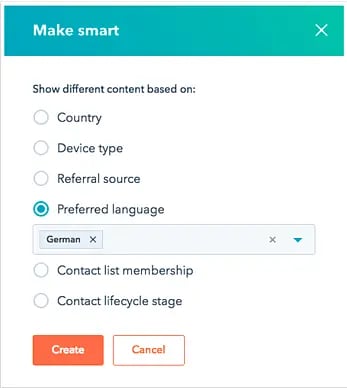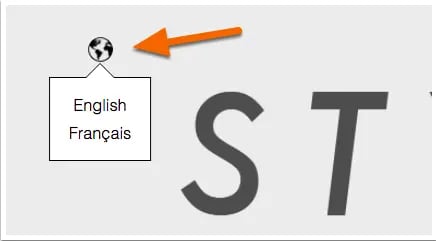For businesses to grow better, they need to be able to reach their network. If your business is global, this means reaching not only a number of regions, but a number of languages, too.
As HubSpot helps businesses grow better, having an arsenal of multi-lingual communication tools is a necessity to market to different regions. At INBOUND 2016, HubSpot introduced Multi-Language Content Management, and we’ve only been expanding since.
With so many tools, sometimes choosing the right one and setting it up can be a bit confusing. Is the visitor supposed to choose their own language experience? Will the browser already know the preferred language and redirect them? What if the user is visiting from Colombia but their preferred language is French?
CMS Hub Professional and Enterprise users can build smart content based language and use multi-language content.
But aren’t they the same?
Not quite. Let’s take a dive into the difference.
Get certified in content marketing for free:
Access the Content Marketing Certification Course in Your HubSpot Account
Building Smart Content by Preferred Language
On pages and templates, you have the option to set up smart content by preferred language. While you can display content by a known country when creating smart content, this uses the visitor's IP address as the basis for their location.
Smart content by preferred language uses the visitor’s preferred browser language, which will be more reliable than IP for determining what language content should be displayed in.

This tool is useful for displaying different sections of content and text on a page based on a visitor's language. The content can be modified from its default content to display in a translated language or with different style. Smart rules set on the modules will execute without creating a full page translation or having any hard change in the URL of the link. Did we mention the edits can all be made on a template or page level, without any changes to your domain settings?
Check this out in your HubSpot account:
Access Your Landing Pages in HubSpot
Using Multi-Language Content
Use HubSpot's multi-language content to manage your content in different languages on a single domain by creating full page translations for visitors to switch between. For Enterprise customers, you can connect an unlimited number of language-specific subdomains. You can use these interchangeably depending on the language of each page.
This instruction manual offers a “how-to” take for you to get acquainted with these multi-lingual tools. Unlike the smart content by preferred language tool, creating page translations will append the language abbreviation to the page URL in the Settings tab of your page editor (e.g., "www.domain.com/page" will change to "www.domain.com/fr/page"). It will also change the links in a language-specific page so that they lead to pages of the same language (e.g., in a French page, a link to "www.domain.com/page" will automatically be changed to a link to "www.domain.com/fr/page"). This is not a redirect, but an actual change to the URL link.
Another key difference between these tools and their smart content counterpart is the ability to add a language switcher module to your page. The language switcher module will allow visitors to select and toggle between their preferred language on your site.

Say goodbye to the days of opting for a discombobulated browser auto-translation. With HubSpot’s smart content and multi-language tools, you can ensure that your global customer base is able to queue up the correct content for their language preference.
For any additional questions on this, check out the managing multi-language content knowledge document or reach out to HubSpot’s customer support team.
Want to connect with others on HubSpot tips, tricks, and updates? Head over to the HubSpot Community to join a conversation or start one of your own.
